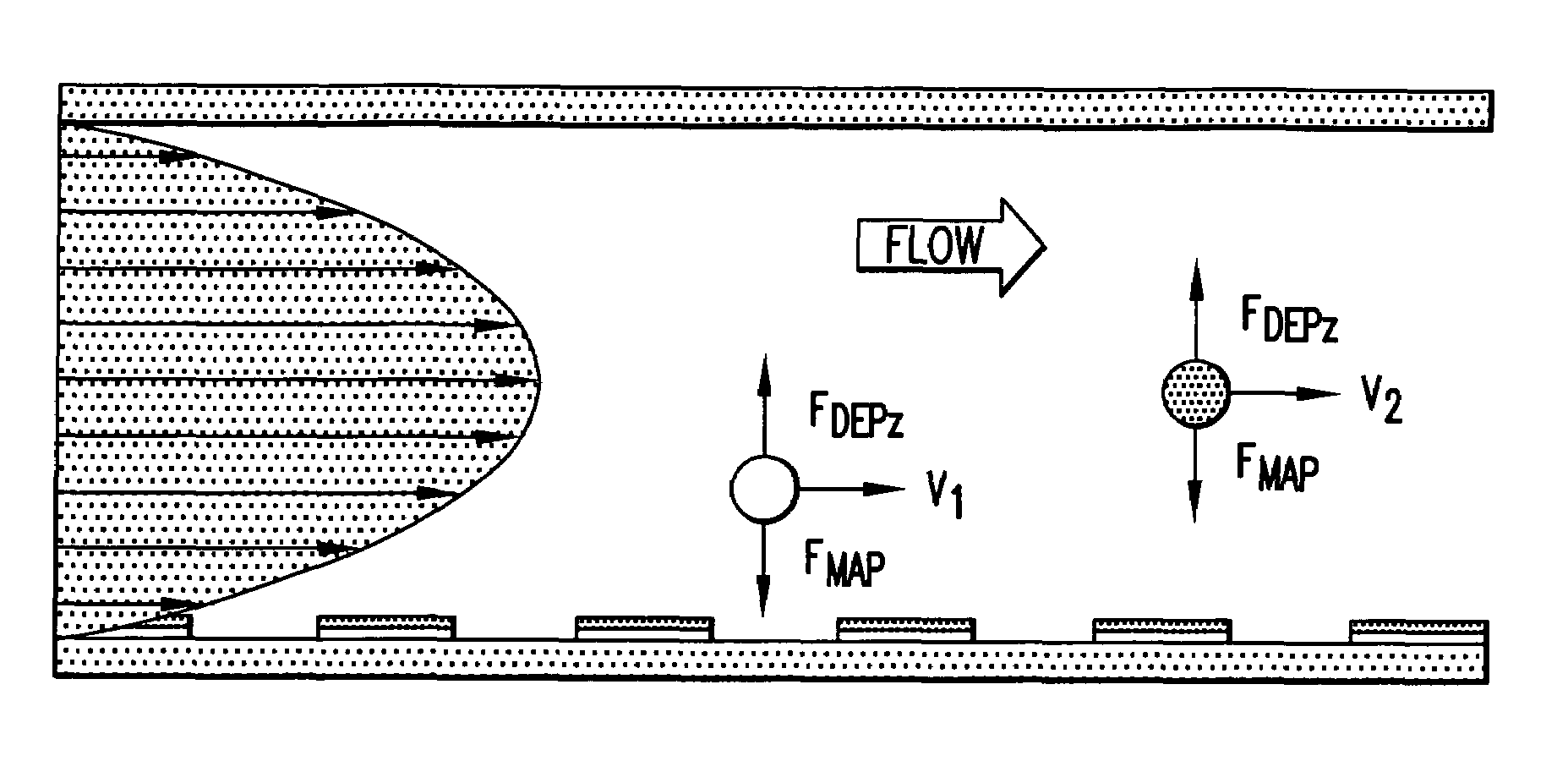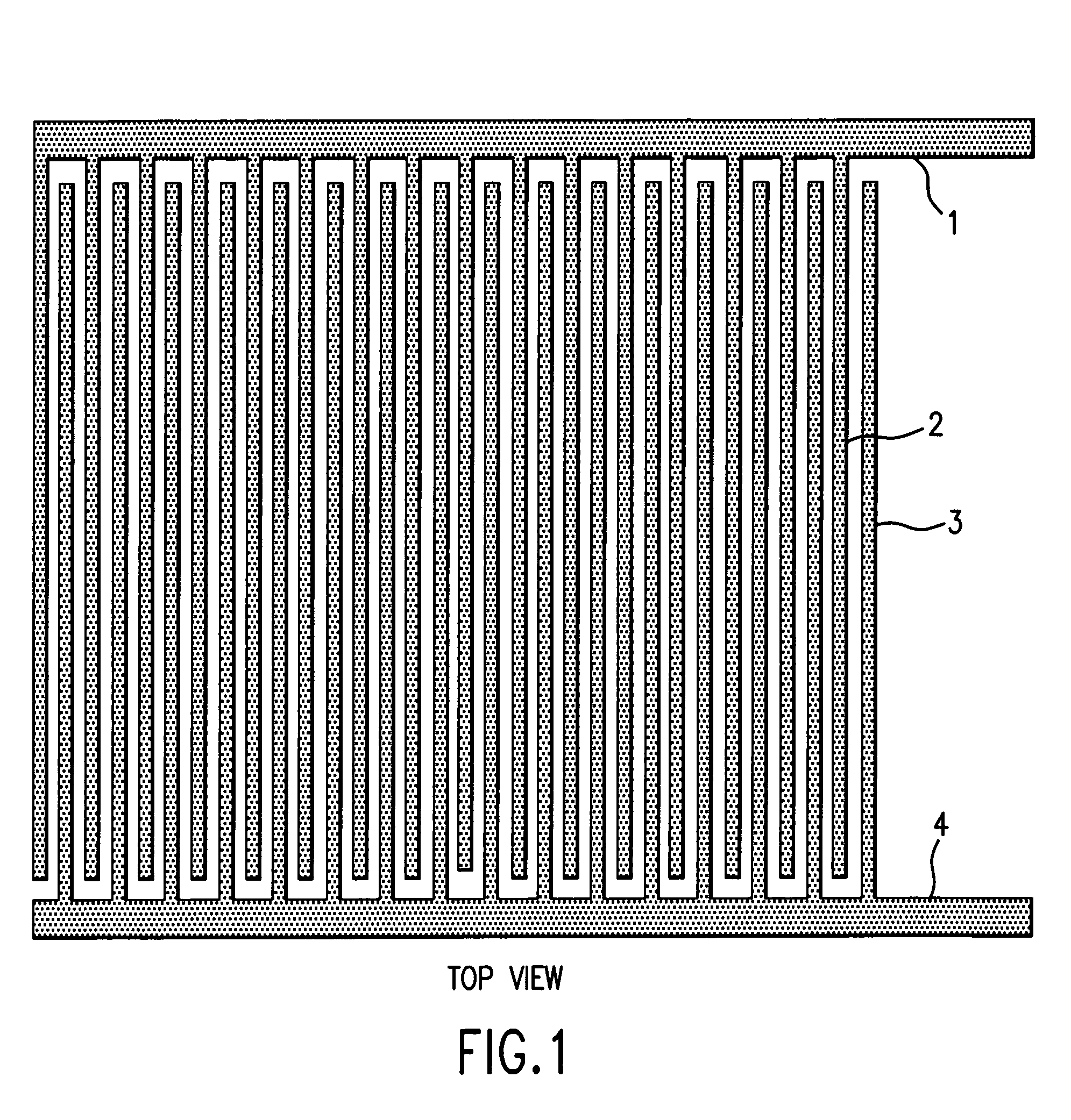Method and apparatus for combined magnetophoretic and dielectrophoretic manipulation of analyte mixtures
a combined magnetophoretic and dielectrophoretic technology, applied in the direction of fluid pressure measurement, liquid/fluent solid measurement, peptide measurement, etc., can solve the problem of limiting sample recovery, unable to distinguish between or isolate cell subpopulations that are characterized by, and inability to determine the extent to which magnetic labels have bound a target analyte, etc. problem, to achieve the effect of improving analyte recovery efficiency, reducing or eliminating the relaxation tim
- Summary
- Abstract
- Description
- Claims
- Application Information
AI Technical Summary
Benefits of technology
Problems solved by technology
Method used
Image
Examples
first embodiment
[0073]Two exemplary embodiments of separators are described that exploit analyte positioning by a combination of dielectrophoretic and magnetophoretic forces. In the first embodiment, which does not exploit the flow velocity profile of the carrier fluid and is suitable for continuous processing of samples, analyte mixtures may be flowed continuously through a chamber equipped with arrays of electrodes and magnetrodes. Analytes are then subjected to the combined dielectrophoretic and magnetophoretic forces resulting from the electric and magnetic fields. Providing they spend sufficient time within the flow channels, these forces move analytes sufficiently close to characteristic positions in the carrier medium flow profile stream at which the DEP and MAP forces balance so that they may be identified, separated, or isolated. Therefore, analytes emerge from the flow channel at positions that depend on their dielectric and magnetic characteristics. Different analytes may be characterize...
second embodiment
[0083]A second embodiment for continuous mode separation is shown in FIG. 9. FIG. 9 shows an alternate embodiment wherein all elements of the diagram with the exception of the outlet port VI are the same as described in FIG. 8. In FIG. 9, the outlet port arrangement comprises multiple ports configured so as to collect bands of fluid that travel through the flow chamber at certain defined distances from the electrode and magnetrode elements and from the walls of the flow chamber. Specifically, FIG. 9a shows how carrier fluid traveling through the flow channel at different distances from the flow channel walls can be removed from the flow channel through, for example, six exit ports. Analytes or labels or analyte-label complexes carried in the carrier medium at different distances from the chamber floor, at bottom of the diagram, are thereby caused to exit through different exit ports.
[0084]Description of batch-mode operation
[0085]In an exemplary separation using the batch mode, the f...
PUM
| Property | Measurement | Unit |
|---|---|---|
| dielectrophoretic force | aaaaa | aaaaa |
| magnetic force | aaaaa | aaaaa |
| dielectric | aaaaa | aaaaa |
Abstract
Description
Claims
Application Information
 Login to View More
Login to View More - R&D
- Intellectual Property
- Life Sciences
- Materials
- Tech Scout
- Unparalleled Data Quality
- Higher Quality Content
- 60% Fewer Hallucinations
Browse by: Latest US Patents, China's latest patents, Technical Efficacy Thesaurus, Application Domain, Technology Topic, Popular Technical Reports.
© 2025 PatSnap. All rights reserved.Legal|Privacy policy|Modern Slavery Act Transparency Statement|Sitemap|About US| Contact US: help@patsnap.com



